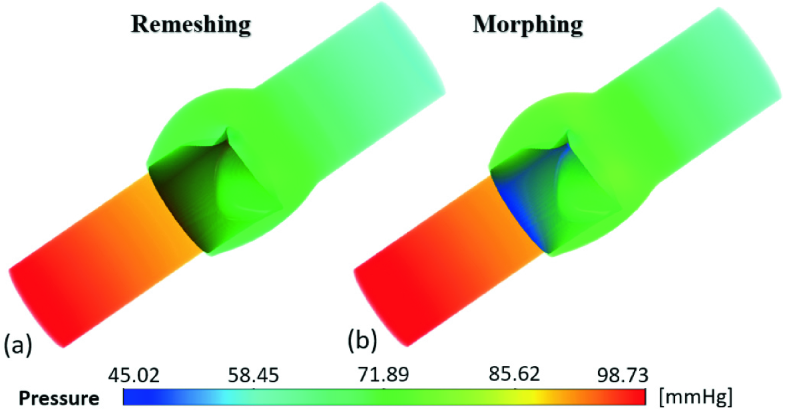 In the conference paper titled Advanced Radial Basis Functions Mesh Morphing for High Fidelity Fluid-Structure Interaction with Known Movement of the Walls: Simulation of an Aortic Valve – ICCS International Conference on Computational Science 2020 – , a fast high fidelity workflow for a multi-physic Fluid-Structure Interaction analysis exploiting ANSYS Workbench and RBF Morph is given. High fidelity is gained thanks to the spatial resolution of the computational grids and a key enabler to have a proper exchange of information between the structural solver and the fluid one is the management of the interfaces.
In the conference paper titled Advanced Radial Basis Functions Mesh Morphing for High Fidelity Fluid-Structure Interaction with Known Movement of the Walls: Simulation of an Aortic Valve – ICCS International Conference on Computational Science 2020 – , a fast high fidelity workflow for a multi-physic Fluid-Structure Interaction analysis exploiting ANSYS Workbench and RBF Morph is given. High fidelity is gained thanks to the spatial resolution of the computational grids and a key enabler to have a proper exchange of information between the structural solver and the fluid one is the management of the interfaces.
A class of applications consists in problems where the complex movement of the walls is known in advance or can be computed by FEM and has to be transferred to the CFD solver. The aforementioned approach, known also as one-way FSI, requires effective methods for the time marching adaption of the computation grid of the CFD model. A versatile and well established approach consists in a continuum update of the mesh that is regenerated so to fit the evolution of the moving walls. In this study, an innovative method based on Radial Basis Functions (RBF) mesh morphing is proposed, allowing to keep the same mesh topology suitable for a continuum update of the shape. A set of key configurations are exactly guaranteed whilst time interpolation is adopted between frames. The new framework is detailed and then demonstrated, adopting as a reference the established approach based on remeshing, for the study of a Polymeric-Prosthetic Heart Valve (P-PHV).
Learn the advantages of mesh-morphing in the biomedical applications.
Click here to download the conference paper.




